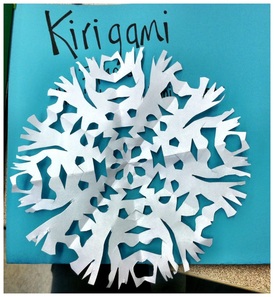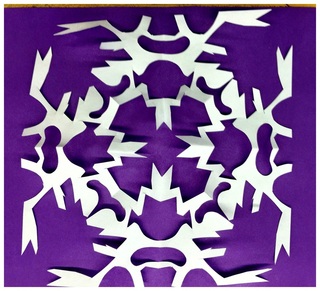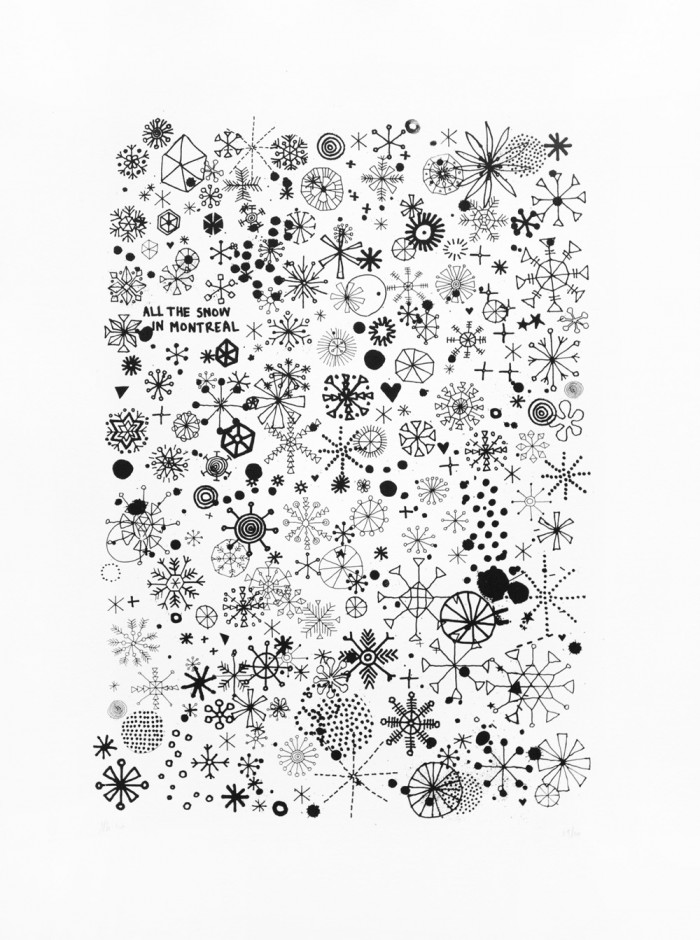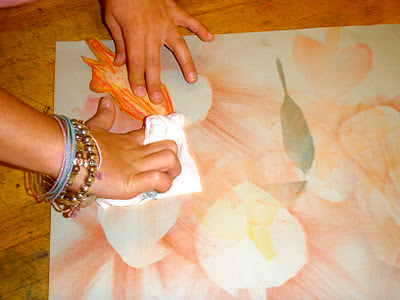Friedensreich Hundertwasser is one of my favorite artists. I honestly do not know much about his personal life, but I absolutely love his artwork - the lines, shapes, colors, rhythm, and repetition.
I needed a new kindergarten/1st grade lesson and I was coming up blank. No ideas. I thought and thought all weekend.
To hopefully stir up some inspiration I went traveling through my blog to see if there was an old project I had forgotten about and wanted to do. Well, I did better than using an old project - I was inspired to create a new lesson all together!!!
A few years ago I was asked to make a
piece of artwork with the students to auction off at a district event. Kindergarten and I made original artwork inspired by Hundertwasser. I decided to jump off this idea for my new lessons.
I went to the internet and searched images for Hundertwasser - originally looking for the artwork I used for my fundraising project. Instead I found this beauty: Arche Noah.
It was not only beautiful but I could see my kiddos recreating this masterpiece with paper, texture plates, glue and scissors! I had decided on the project, now to plan.
I could not decide if I wanted to have K do this project or 1st grade to do this project - in the end I decided to have both do it! Often times when I create a new lesson I will try it out in different grade levels trying to figure out where it fits best.
First off I projected the image of Arche Noah and ask the students to raise their hand when they could tell me something they noticed - a color, a shape, something they see. I wait until ALL hands are in the air. Every single kiddo can tell me a color or a shape. I call on kids until I see we have noticed a majority of the picture or the students are getting antsy. I often get kids that will say they see lollipops and lots of circles. On occasion I had a student who would notice the fence or the water running through the picture - but most times I would have to guide students to see those things. I read them the text at the bottom - as most of my kids are still working on reading. I ask the students if it would make sense for the bottom to talk about nature but have big lollipops - generally I hear light bulbs go off around the room as students' hands leap into the air and "trees!" is blurted from their mouths.
We then look for other clues that might tell us that they are indeed trees and not lollipops - they find the fence, the grass, the water - etc. We talk about all the colors we see inside the concentric circles. We talk about the textures we see on the ground....
Here is where it gets interesting. I decided after teaching this to first grade that it was a little over the ability level of most of my kindergarten students - so for kindergarten I adapted the lesson for their abilities.
1st Graders:

I had the students gather around for a demonstration where I showed them how to add texture to their 'ground' by using different colored green crayons and texture plates. After their WHOLE paper was covered in texture(s) they had to trace different sized circles on colored paper, cut them out and glue them down. This lesson ended up not only being a lesson about Hundertwasser and concentric circles - but it also became a lesson about tracing, cutting, gluing, and placing the circles in size order -- something I realized I needed to stress halfway through my demonstration.


As an adult it is easy to forget that all skills are learned at one point - we aren't born knowing how to write, read, or how to put things in sequential order whether by number, size, color or any other qualitative element.
After a slightly longer than normal demonstration I sent the kids out and they got to work. Most students only finished their background and part of their first "tree".

The next class period I quickly refreshed how to trace and cut - but that they needed to have 3,4, or 5 trees on their paper. We observed and counted that Hundertwasser had 9 on his! Once the students had their decided amount of trees they were to get strips of black paper for their "trunks" and a strip of color paper for their fence.
I explained and demonstrated how to add the trunks and the fence. I showed the students how to make the fence by accordion folding - or "fan" folding as the students called it - then cutting off one tip at a diagonal. This way when they unfolded their paper they had something that resembled a picket fence!
Magic I tell ya.
The kiddos were off and running! My room was a mess and it was beautiful!
Now the adaptation for Kindergarten:

I realized that all the tracing and cutting was going to be too much for my beginner cutters so I changed my lesson slightly. I had students pick if they wanted 3,4, or 5 trees on their paper. I had them trace a large circle onto some extra tag board I had lying around, write their name in the circle and cut them out. Once the students cut out their circles they took a white oil pastel and drew the concentric circles on the tag board. Next I passed out Prang glitter watercolor - boy were the kids excited! I made a BIG deal about using the TIPS of their paint brushes as many of them like to scrub with their brushes. I explained that if they didn't use the paints the wait I taught them then they would not be able to use the glitter paint, but the normal kind. I have never seen kids so gentle with paint before!

The paint beautifully added lots of deep colors to the tag board while resisting the white oil pastel. At the end of class I had the students place their circles on a green sheet of paper and place it on the drying rack.
Next class the students finished up their projects much like 1st grade. I had them color the background with green crayons and texture plates. The students glued down their "trees", added trunks and a fence!
Both projects ended up being beautiful! This lesson was engaging and interesting to students while also challenging their fine motor skills! A lesson I will repeat in the future!


 |
| This one was done by a kinder that shows spectrum tendencies - got all the pieces! |
 It's
the week before Winter break and I had planned to tap into the kids
excitement of snow for this project - but since it seems that December
is determined to act more like spring than winter there is no extra
'snow excitement'. I decided to stick with the project anyhow, knowing
the kids would love it even if it was raining outside and 50 degrees.
It's
the week before Winter break and I had planned to tap into the kids
excitement of snow for this project - but since it seems that December
is determined to act more like spring than winter there is no extra
'snow excitement'. I decided to stick with the project anyhow, knowing
the kids would love it even if it was raining outside and 50 degrees.  Next
we passed out square pieces of paper, folded the first one together,
drew on shapes, cut out - and then the students had the rest of class
to make as many snowflakes as they wanted. I had the Kinders and 1st
graders fold their paper into a mountain and then fold their mountain
in half. The 2-5th grade students did the same as the younger kids
but then folded it one more time in half.
Next
we passed out square pieces of paper, folded the first one together,
drew on shapes, cut out - and then the students had the rest of class
to make as many snowflakes as they wanted. I had the Kinders and 1st
graders fold their paper into a mountain and then fold their mountain
in half. The 2-5th grade students did the same as the younger kids
but then folded it one more time in half. 















































